Cycling on the Old Railways
by Liz Hearn
Did you think the only way you could travel on a railway was by
train? Think again! Today, hundreds of miles of old railway
corridors have been converted into cycling routes.
The wonderful thing about cycling old railways is that they are
virtually flat and green, offer safe and traffic free cycling,
and run through some of England's most spectacular countryside.
When industry moves out nature quickly moves in and the green
corridors of embankments and cuttings are a visual treat to cycle
through.
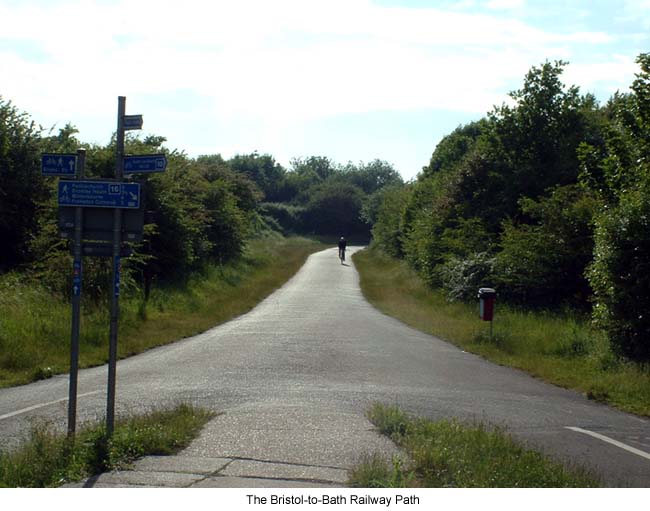
Trains don't like steep gradients, so old railway cycle tracks
are great for the novice cyclist, or for the expert cyclist who
wants a clean run at a good distance. The old lines are
traffic-free, apart from other cyclists and pedestrians.
Occasionally, where the routes are also bridleways, you share the
trail with horses. Road crossings are often the old railway
bridges, but where old bridges were removed instead of repaired,
crossings are fenced to give cyclists safe warning. These
routes pass through some of the best of British countryside. You
get great views at a speed that enables you to creep up on
wildlife and stop to enjoy the wild flowers in the hedgerows. The
Wirral Way gives views of the River Dee salt marsh estuary to
North Wales, across some of the country's best seabird watching.
The Camel Trail delights the eyes with the River Camel tidal
estuary and riverbanks. The views across these estuaries change
with the tide. The Peak District moors and rich Derbyshire farm
land can be explored from the Tissington Trail, and The Bristol
to Bath Railway path has four river crossings and views across
the Somerset farmland. The Bristol to Bath Railway Path has
also been reclaimed by steam rail enthusiasts, and part of the
route is shared with three miles of track that carries visitors
on refurbished steam trains departing from Bitton station. The
Camel Trail links to the Bodmin and Wenford Steam Railway at
Bodmin. You can discover interesting old railway features along
the way. Find old platforms and stations, signal boxes, cuttings
through native rocks, bridges under roads, bridges over rivers,
and pass through the old tunnels.
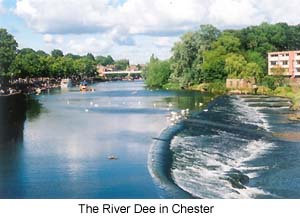 If you are asking yourself how all these wonderful old railway
tracks came to be built and then abandoned, the answer is in one
word: Beeching. Dr Richard Beeching was asked by the government
to look at the state of the railways. His objective was to ensure
that the railways network provided an appropriate public service
for the changing times and, more importantly, that it reduced its
cost. The recommendations from the Beeching report meant the
closure of smaller, unprofitable lines to allow the remaining
system to deliver people and goods to their destinations and a
profit to the government coffers. At the time the railways were
entirely nationalised, but had been built by separate private
companies so there was duplication in some places. No coherent
overview had ever been made before.
If you are asking yourself how all these wonderful old railway
tracks came to be built and then abandoned, the answer is in one
word: Beeching. Dr Richard Beeching was asked by the government
to look at the state of the railways. His objective was to ensure
that the railways network provided an appropriate public service
for the changing times and, more importantly, that it reduced its
cost. The recommendations from the Beeching report meant the
closure of smaller, unprofitable lines to allow the remaining
system to deliver people and goods to their destinations and a
profit to the government coffers. At the time the railways were
entirely nationalised, but had been built by separate private
companies so there was duplication in some places. No coherent
overview had ever been made before.
In the years following the original report railways were closed,
lines lifted and land sold off to start to offset the massive
losses the railways had incurred in the previous years. Station
buildings were sold off and were frequently converted to housing.
Abandoned lines became derelict. In some instances local councils
or groups of volunteers acquired the land and created the parks,
cycle tracks and bridleways we enjoy today.
Cycle Hire
The price of cycle hire depends upon your location and how
long you want to hire. If you are planning a large group to
cycle, call ahead to order the bikes to ensure they are
available. Arriving early in the day during the peak season of
July and August is also recommended -- particularly the popular
August Bank holiday weekend (the last weekend in August).
Bike hire usually includes providing you with a cycle helmet, a
puncture repair kit, air pump and a cycle lock. You are often
required to leave a returnable deposit for the bikes and the
registration number of your car in the car park.
Cycle hire
outfits sometimes do tandems, which is great if you have a weaker
cyclist in your group. There is quite a skill in riding them and
a few practise runs around the hire centre will tell you if you
are suited before you take it out. Children's cycles are also
available in a number of sizes. Some cycle hire places do the
tag-along type cycles for younger children. These have a rear
wheel and a pedal so children can join in the ride. The front of
their bike is attached to the back of your adult bike, so you
help them with steering and balance. For very small children,
some hire centres offer adult bikes with a child's seat attached
over the rear wheel. The deluxe version is a seat in a two wheel
trailer unit that can be pulled behind the adult cycle. The seat
has a harness to keep the small child in the trailer and has a
hood and front clear plastic screen. Children's cycle helmets are
also usually available.
The cycle hire company will adjust seat height and check the air
in the tyres for you before you set off to make for a most
comfortable cycling experience. It is easy to manage 7 miles
per hour on average. This makes a 14-mile trail which will get
you there and back in four hours. This does not include the
inevitable stops to enjoy the diversions, which can extend your
trip to an entire day! There are places to buy food, snacks and
drink en route for each of these trails but you cannot beat
sitting in a leafy track side glade or old abandoned station with
a homemade picnic.
The only potential downside to this cycling activity is the
changeability of British weather. An American visitor recently
said of British weather that, 'If you don't like the weather you
have right now, wait 30 minutes and you'll have something
different.' You have three weather issues to think about when
planning a day's cycle. The first is hot weather. Cycling can be
thirsty work in the heat. If it looks like a scorcher,take a
couple of litres of water in your backpack. Drink a little and
often, and refill at any opportunity. Second, if the weather
looks like rain, wear light-weight waterproofs and avoid wearing
jeans -- once they get wet they stay wet for a long time. Plan
ahead and have dry clothes in your vehicle when you return. If it
looks like rain, it probably will rain, so expect to get
wet and enjoy the cycle anyway. The third weather issue is wind.
If you're up against rain and wind, it might be better to give up
and find a nice teashop instead. Even without the rain, wind is
discouraging to cycle in. It's difficult to balance with a side
wind buffeting you, and a head wind is no fun at all. Otherwise,
you cannot stop the weather, so don't let the weather stop you
from having a great day cycling.
Here are four of the best cycle routes in the country:
The Camel Trail
Route: Bodmin to Padstow, via Wadebridge in Cornwall
Length: 17 miles
The route has two distinct characteristics,
which change at Wadebridge. Bodmin to Wadebridge is a steeper
route through woodland and farmland. At Wadebridge the River
Camel opens out into a tidal sea estuary with mud banks and sea
grasses. It is a haven for sea birds and fabulous birdwatching.
The scene changes with the tide so the return journey is a
different treat.

You cannot visit Cornwall without eating a pasty, a meat and
potato filled pastry pocket. A 'cream tea' is more refined but
just as calorific. The cup of tea is joined by scones with
strawberry jam and the thickest, creamiest clotted cream placed
on top.
Detours and Diversions:
- Bodmin and Wenford Steam Railway
- Wadebridge town
- Padstow fishing village and harbour with art galleries and famous fish restaurant.
- Ferry across the River Camel to village of Rock and coastline
- Cornish Pasties and cream teas are 'must try' local food from Cornwall.
Tissington Trail
Route: Ashbourne to Parsley Hay, Derbyshire.
Length: 13 miles
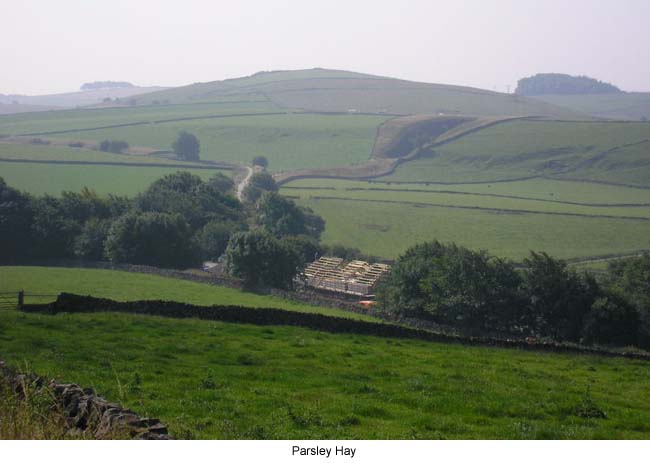
The journey from Ashborne to Parsley Hay takes you from lush
green valleys to heather moorland tops. The climb is gentle,
which makes the outward journey from Ashbourne a little slower
and the return trip a very gentle downhill breeze. The Trail
takes its name from the village of Tissington, a few miles from
Ashbourne. The village is best known for its tradition of well
dressing. The springs of water that come up in the village are
thought to have provided the clean water that saved the village
from Plague. The Church adopted the tradition of decorating the
wells with flowers each week approaching Asscension Sunday,
usually in May.
Tissington Manor is occasionally open to the public and boasts
a fine tea house in the old stable block. The detour for cheese
takes you a mile or two from the track at Hartington down quite a
steep hill, but the Stilton cheese is worth the climb back up
again.
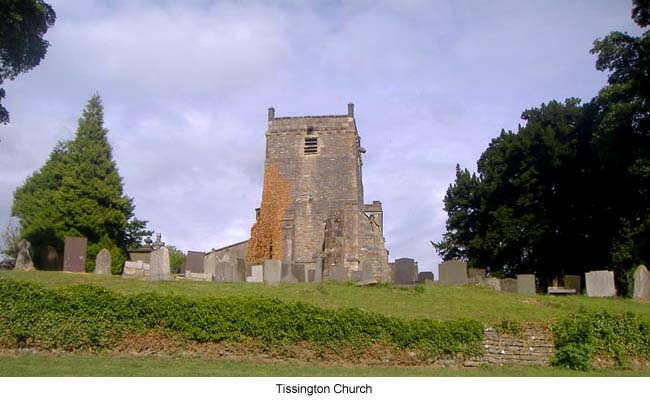
Detours and Diversions:
- Ashbourne Tunnel -- with steam train sound effects.
- Tissington Village -- including an annual Well Dressing festival and Tissington
Manor
- Signal Box at Hartington
- The Olde Cheese shop and factoryΡ Fabulous Stilton cheese is worth the detour
to Hartington Village.
Bristol to Bath Railway Path
Route: Bristol to Bath, Somerset.
Length: 15 miles
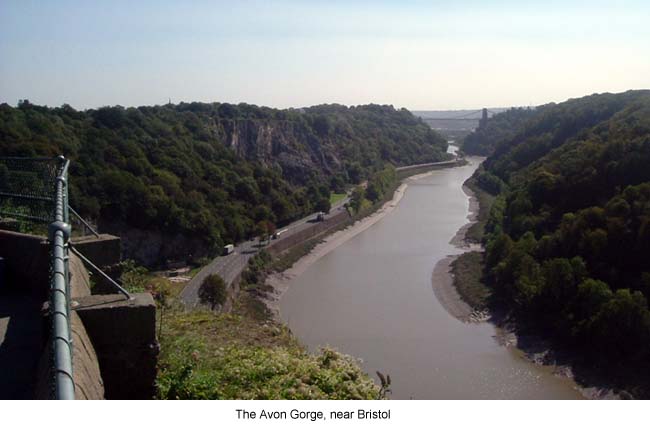
The cycle ride between Bristol and Bath is wonderfully flat
and a dream to cycle. You'll travel through the outlying
countryside and down green lanes virtually to the city centres.
Sharing three miles of the trackside with a steam train is part
of excitement. Bitton station is the centre of the steam
enthusiasts' dream. They started laying track just two years
after the Beeching closure. The railway yard is full of old
engine and carriage parts, like rusting red dinosaurs waiting to
be brought back to life. Four bridges carry you across the River
Avon into Bath. A detour at the steam rail station of Avon
Riverside takes you to the river, where you can take a ride on
the boats.
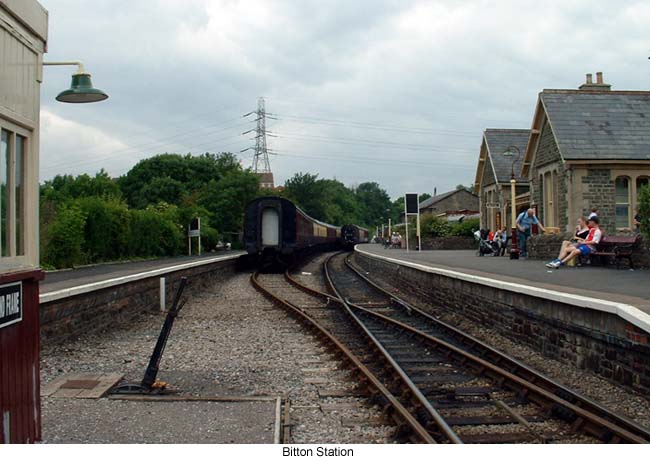
Detours and Diversions:
- Cities of Bath and Bristol
- Avon Valley Railway -- steam railway at Bitton.
- Tunnel at Staple Hill
- Maggotsfield Junction -- a station with a ghost train story to tell.
- Roman style water fountain feature for the thirsty cyclist.
- Wildlife centre at Willsbridge Mill -- outside Bitton
The Wirral Way
Route: West Kirby to Hooton on the Wirral, Merseyside.
Length: 12 miles
West Kirby's location on the north west corner of the Wirral
peninsular with sandy beaches and winds straight from the Irish
sea have made it a perfect place for windsurfer, kite surfers and
golfers. The Royal Liverpool Golf Course at Hoylake, which
recently hosted the British Open competition, is but a stone's
throw away. The Wirral Way takes you the length of the peninsular
through its rural pastures, now mostly green belt protected from
residential development.
Thurstaston village has Viking roots and hosts a nature
reserve and visitor centre, as well as being the bike hire start
point. The bird life at home in the estuary makes the Dee salt
marsh a honey pot for birdwatchers. At Heswall take Banks Road
back to the shore to enjoy a drink and a bite to eat right on the
edge of the estuary at 'Sheldrakes,' named after the ducks that
live on the muddy river banks. The Parkgate river front has Roman
roots, as it once had water up to the sandstone quayside. The
promenade is a place to walk and try the ice cream at Nicholls.
Hadlow Road station in the village of Willaston has a well
preserved station house and platforms. The waiting room and
ticket office are displayed as they might have been when the
station opened.
Detours and Diversions:
- West Kirby Marine Lake
- Thurstaston Nature Reserve and Visitor Centre
- Thurstaston Village Church
- Heswall shore and Sheldrakes Bar and Restaurant -- great views and great food.
- Parkgate waterfront -- Nicholl's famous Ice Cream shop
- Hadlow Road preserved Railway Station.
Pick up a route map at the Visitors Centre at Thurstaston, Wirral
Country Park. The map is particularly helpful getting through
Heswall and Neston, where the Wirral Way makes small detours
around houses. It will also help you find those detours for that
famous ice cream.
Related Articles:
- Get On Yer Bike! by Dawn Copeman
- https://www.timetravel-britain.com/articles/travel/bike.shtml
- More information on biking in Britain, including an extensive list of helpful websites.
More Information:
We regret that we no longer have the resources to maintain up-to-date links and/or hours and pricing details for the various sites and attractions listed on this website. For more information about the location(s) listed above, please use your favorite search engine or visit Wikipedia.
Liz Hearn is a British freelance writer
from the Wirral. She writes children's articles and travel
articles. Her articles have been published in Transitions
Abroad and Highlights for Children. She lives overseas
with her husband and small daughter and currently lives in
Beijing, China. She has volunteered for the National Trust for 15
years as a volunteer leader of Working Holidays and has learned a
new respect for the British rural landscape through active
participation in its conservation.
Article © 2007 Liz Hearn
Photos courtesy of Wikipedia.org
| 